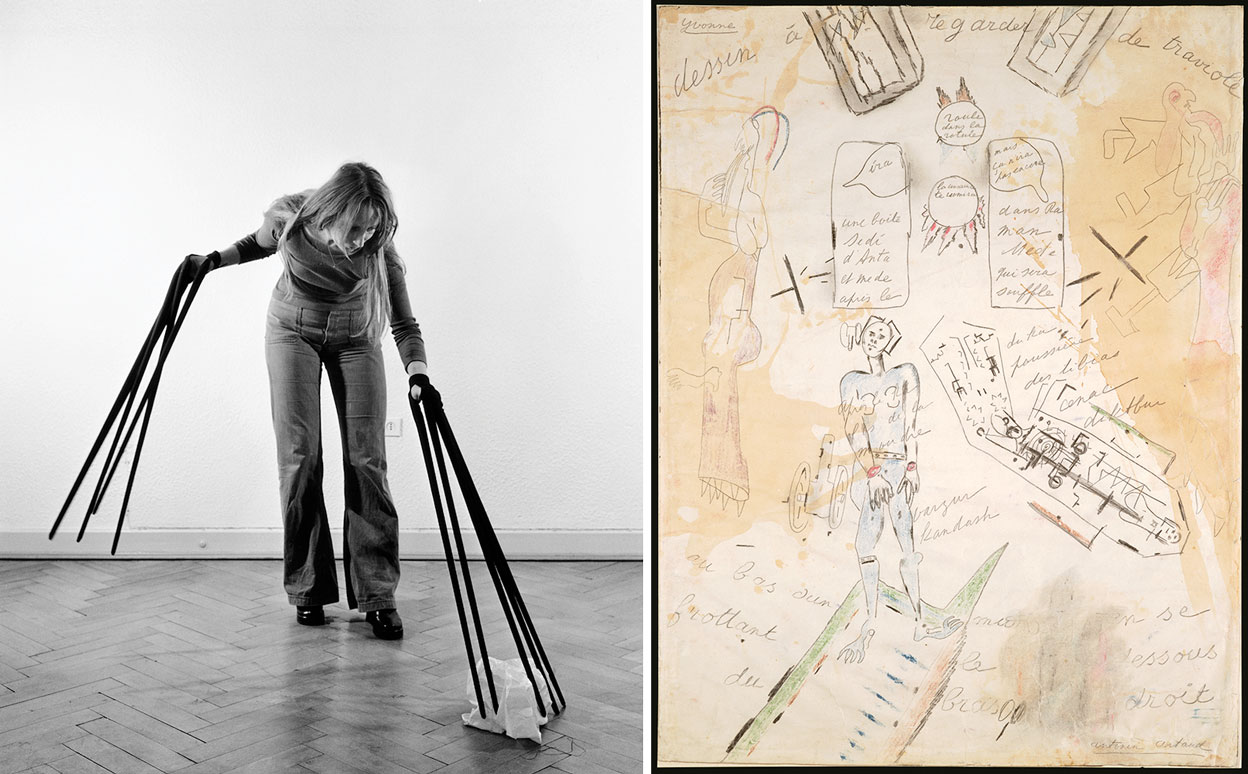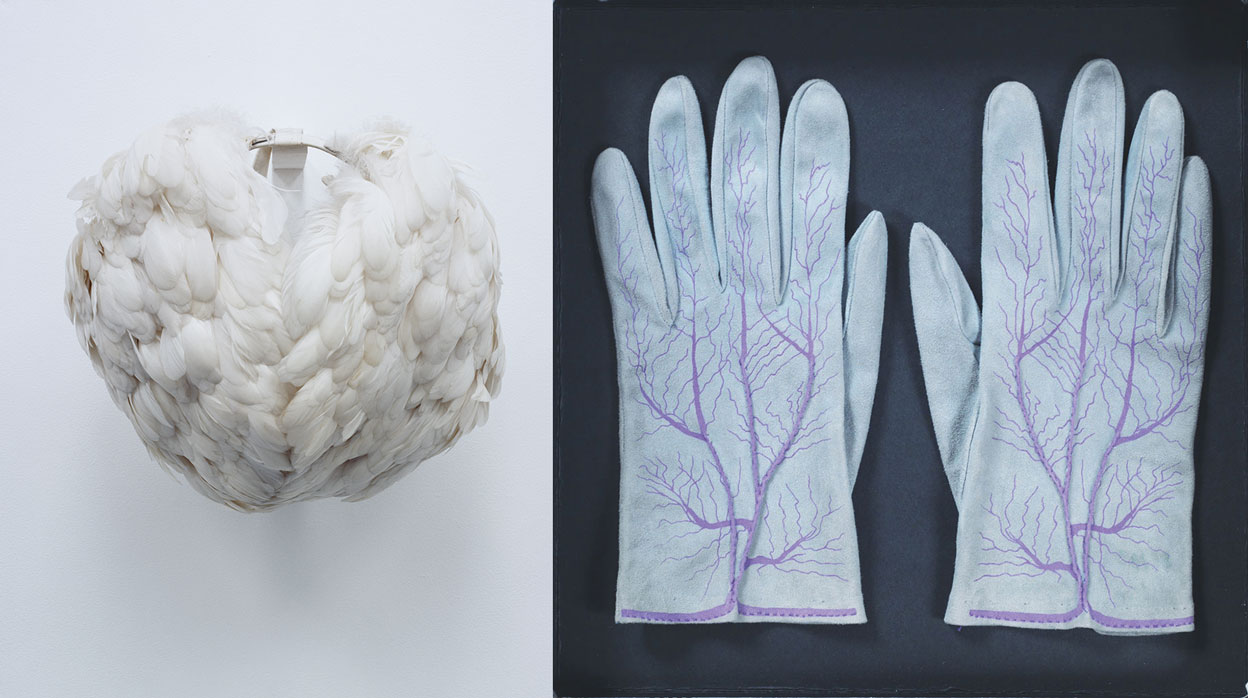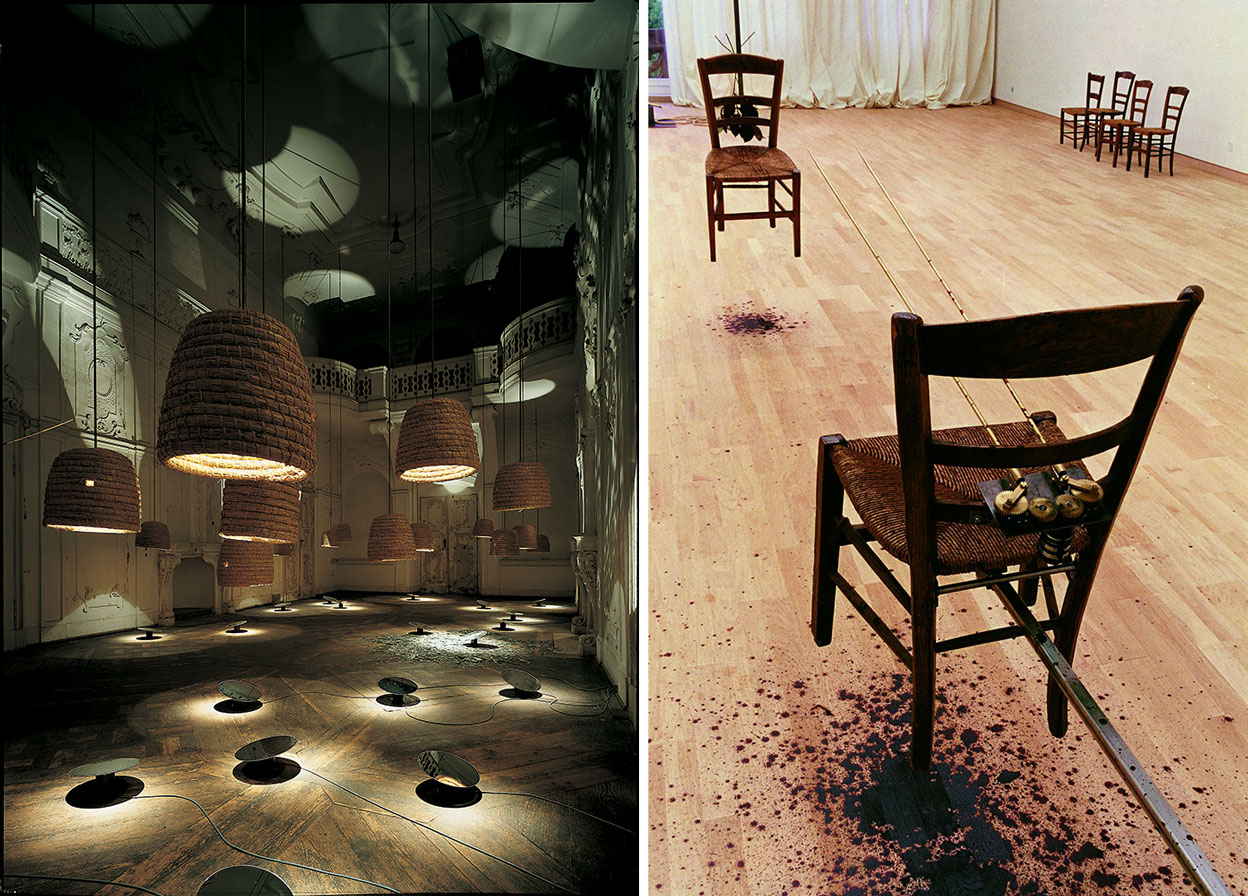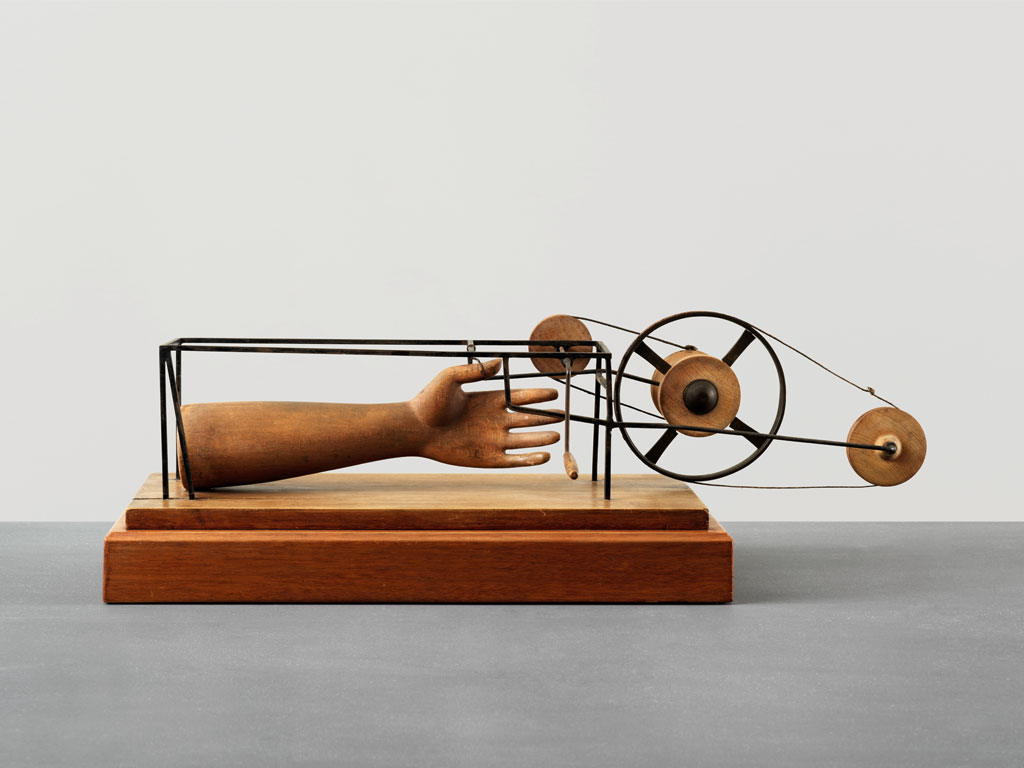ART-TRIBUTE:Rebecca Horn-Theatre of Metamorphoses
 Rebecca Horn perpetuates in a unique manner, the themes bequeathed to us by mythology and fairy-tales, such as metamorphosis into a hybrid or mythical creature, the secret life of the world of objects, the secrets of alchemy, or the fantasies of body-robots. She makes these founding themes, which have been present in numerous currents of art history such as Mannerism or Surrealism, resonate with contemporary history.
Rebecca Horn perpetuates in a unique manner, the themes bequeathed to us by mythology and fairy-tales, such as metamorphosis into a hybrid or mythical creature, the secret life of the world of objects, the secrets of alchemy, or the fantasies of body-robots. She makes these founding themes, which have been present in numerous currents of art history such as Mannerism or Surrealism, resonate with contemporary history.
By Dimitris Lempesis
Photo: Centre Pompidou-Metz Archive
The exhibition “Theatre of Metamorphoses” explores Rebecca Horn’s diverse theme of transformation from animist, surrealist and mechanistic perspectives, placing special emphasis on the role of film as a matrix within Horn’s work. Also the exhibition underlines the contribution of Rebecca Horn’s spiritual peers who have nourished her imagination: Man Ray, Marcel Duchamp, Meret Oppenheim and Constantin Brâncuşi. Her films are underpinned with a liberating and anarchic energy where poetry and humour often defuse the underlying violence. Firstly, they aimed at documenting her intimist and physical performances, then progressively set themselves free in order to become the privileged arena where the mechanised sculptures and the actors engaged in narratives which are both tragi-comic and surreal. Whilst adolescent, Rebecca Horn decided to become an artist and studied at the Hochschule für Bildende Künste of Hamburg starting from 1963, before a serious lung infection obliged her in 1967 to spend a long period in convalescence in a sanatorium. This experience was to have a powerful effect on the first creations of the young artist: the loss of her physical integrity and her isolation from the outside world led her to an exploration of the body as source material for her work, as part of the Body Art and Performance movement. The body is in turn buried, as in “Black expansion” where black paint absorbs it and makes it disappear, or subjected to organic transformations and to constant metamorphoses, with the addition of prosthetic prolongations, of bandages, horns, gloves or headdresses. This equipment which evokes at one and the same time the Medical Corps, fetishism, violence, desire, serves to test and to transform the sensitivity zone: they increase the physical reclusion of the individual bearer as much as they intensify the exploration of his/her residual perceptive space. And if these prostheses underline the confinement and the frailty of the body, they also accentuate, as in the performance “Einhorn” (1970), its phantasmagorical potential and give meaning to its “individual mythologies” according to one of the themes of the documenta 5 of Kassel in 1972, to which Harald Szeemann invited the artist to present her bodies in extension in space. In the 1970’s, as an echo to the post-minimal scene and the performances of Vito Acconci and Bruce Nauman, space is replaced by body prostheses in order to accelerate this dynamic of isolation, which Rebecca Horn considers as the necessary condition to “discover the forms of a greater perception of oneself” , in isolating devices, such as “Die Chinesische Verlobte” (1976). The body appendages of the first years are successively replaced by kinetic machines whose desires, enjoyment and destructive urges are activated by and for themselves. The parades of these strange mechanical birds often include a reflection on the stereotypes of genres. Bodies without organs which are frighteningly beautiful, or organs without bodies such as “Liebesflucht, Muschelschlaf” (2009) which suggests the egg-shaped and phallic form of “Princess X” by Brâncuşi), the courtship rituals of these works can also be understood as commentaries not deprived of humour on the auto-erotic machines” by Marcel Duchamp, Raymond Roussel and Franz Kafka. Her films, which at her debut endeavored to document her intimist and body performances, progressively cut themselves loose in order to become the privileged arena at the heart of which the mechanised sculptures and the actors were engaged in narratives at one and the same time tragi-comic or surreal, inspired by Samuel Beckett, Luis Buñuel and Buster Keaton. For Rebecca Horn the cinema became an alchemistic medium. As in “La Ferdinanda: Sonata for a Medici Villa” (1981), the animistic parade of a fantastic white bird is borrowed from the founding by Johann Valentin Andrae, “The Chymical Wedding of Christian Rosenkreutz” (1616). The objects and sculptures dematerialise into emotions, desire into madness, from melancholy until death. The actors, which according to her words become “inventive catalysers who breathe life into mechanical prostheses”, come back like archetypes (the doctor, the twin sisters, the dancer) from film after film, according to a logic of repetition and of duality. In the continuity of Dadaism and Surrealism, Rebecca Horn proceeds by association of paradoxical elements forming a new entity as in the work “Wald der vogel freien Sänge” (1991), where the long views which she dramatises are no longer observation tools, but indeed the voyeurs who watch us. From the melody taken from the Symphonic Poem Don Quichotte by Richard Strauss “Concert for Anarchy” (1990), music participates in the laboratory of forms and of perceptions started by Rebecca Horn.
Artists presented with the work of Rebecca Horn: Antonin Artaud, Hans Bellmer, Constantin Brâncuși, Victor Brauner, Claude Cahun, Lucien Clergue, Salvador Dalí, Marcel Duchamp, Paul Eluard, Max Ernst, Alberto Giacometti ,Maurice Henry, Georges Hugnet, Buster Keaton Serge Lido, André Masson, Roberto Matta, Willy Maywald, Joan Miró, Emiel van Moerkerken, Paul Nougé, Meret Oppenheim, Francis Picabia, Man Ray and Tristan Tzara
Info: Curators: Emma Lavigne and Alexandra Müller, Centre Pompidou-Metz, 1 parvis des Droits-de-l’Homme, Metz, Duration: 8/6/19-13/6/20, Days & Hours: Mon & Wed-Thu 10:00-18, Fri-Sun 10:00-19:00 (1st April to 31 October) or Mon & Wed-Sun 10:00-18:00 (1st November to 31 March), www.centrepompidou-metz.fr

![Rebecca Horn, Brennender Busch [Le Buisson ardent], 2001, 350 x 330 x 200 cm, Private Collection, © Adagp, Paris, 2019](http://www.dreamideamachine.com/web/wp-content/uploads/2019/06/026.jpg)



![Rebecca Horn, Die Kleine Sirene [La Petite sirène], 1990, Feathers, motor and metal rod, 172 × 150 × 20 cm, Collection Antoine de Galbert-Paris, © Adagp, Paris 2019, Photo: © Celia Pernot](http://www.dreamideamachine.com/web/wp-content/uploads/2019/06/072.jpg)






